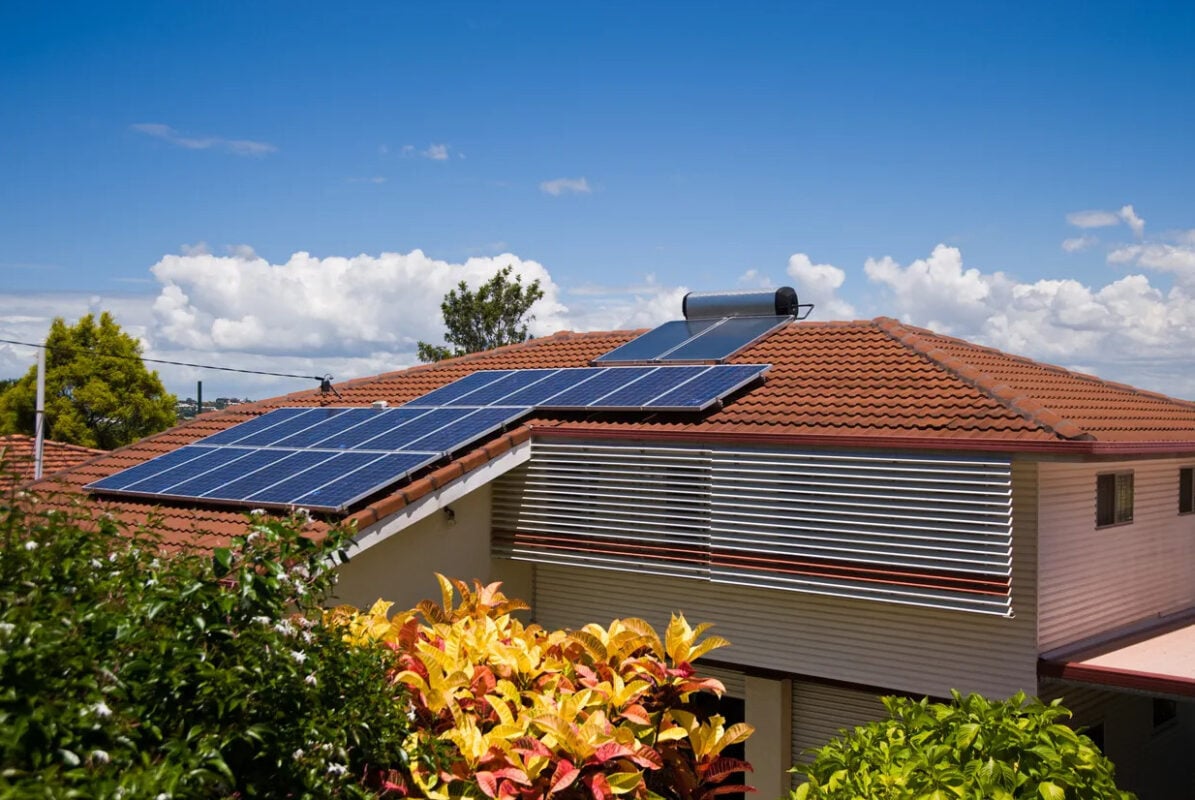Scientists Achieved Infinite Clean Energy Through Artificial Photosynthesis – bgr.com

Report on Artificial Photosynthesis: A Breakthrough for Sustainable Development
Introduction: A Technological Leap Towards Global Goals
Researchers at the University of Cambridge have developed a novel artificial photosynthesis system, presenting a significant advancement in clean energy technology. This innovation directly addresses the urgent need for alternatives to fossil fuels, the leading cause of harmful emissions as identified by the United Nations. By mimicking the natural process of plants, this technology offers a sustainable pathway to energy production that aligns with several key United Nations Sustainable Development Goals (SDGs), particularly those concerning clean energy, climate action, and global health.
Technical Framework and Operational Principles
Mechanism: Replicating Nature for Sustainable Energy
The system operates by emulating the two primary stages of natural photosynthesis through advanced synthetic materials.
- Light-Dependent Reaction: Specialized semiconductor materials capture sunlight to power the splitting of water into hydrogen and oxygen.
- Light-Independent Reaction: Synthetic catalysts use the captured energy to convert carbon dioxide into useful chemical fuels.
This process creates a continuous and potentially infinite energy source powered by abundant natural inputs: sunlight, water, and carbon dioxide. The primary challenges for future development involve improving material durability, extending catalyst lifespan, and reducing production costs to ensure scalability.
Alignment with Sustainable Development Goals (SDGs)
SDG 7: Affordable and Clean Energy
This innovation is a direct contribution to ensuring access to affordable, reliable, sustainable, and modern energy for all.
- It provides a method for generating clean energy that does not damage the environment.
- By relying on universally available resources, it holds the potential to supply power to remote and underserved communities.
- The technology is designed for minimal oversight and integration with existing energy infrastructure, promoting widespread adoption.
SDG 13: Climate Action
The development of artificial photosynthesis is a critical tool for combating climate change and its impacts.
- It offers a direct replacement for fossil fuels in the power sector, significantly reducing greenhouse gas emissions.
- The system utilizes carbon dioxide (CO2) as a key input, creating a potential pathway for carbon capture and utilization technologies.
- By mitigating the drivers of climate change, this technology helps protect vital ecosystems, such as forests, which are already under stress.
Contributions to Additional Global Goals
The successful implementation of this technology would have far-reaching positive impacts across multiple SDGs.
- SDG 3 (Good Health and Well-being): By eliminating harmful emissions from energy production, the system directly combats air pollution, which the World Health Organization links to 7 million premature deaths annually from conditions like heart disease, stroke, and lung cancer.
- SDG 8 (Decent Work and Economic Growth): The transition to clean energy technologies like artificial photosynthesis is known to stimulate economic growth and create new jobs in the renewable energy sector.
- SDG 9 (Industry, Innovation, and Infrastructure): This project represents a landmark scientific innovation that can revolutionize energy infrastructure, making it more resilient, sustainable, and clean.
- SDG 15 (Life on Land): Reducing the atmospheric changes driven by fossil fuels helps protect terrestrial ecosystems from irreversible damage and preserves biodiversity.
1. SDGs Addressed in the Article
-
SDG 7: Affordable and Clean Energy
- The entire article focuses on a scientific breakthrough in “infinite clean energy” through artificial photosynthesis. It directly addresses the need to move away from fossil fuels, which it states have a “detrimental impact on the planet,” and towards clean, renewable energy sources. The technology described uses sunlight, water, and CO2 to create energy, which aligns perfectly with the goal of ensuring access to affordable, reliable, sustainable, and modern energy for all.
-
SDG 13: Climate Action
- The article explicitly links the use of fossil fuels to “human-driven climate change” and presents the new technology as a solution to “protect the planet from the impact of energy-related climate change.” It mentions that the power sector is the “top producer of harmful emissions” and that the innovation offers a way to work in harmony with nature to mitigate these effects.
-
SDG 3: Good Health and Well-being
- A direct connection is made between energy sources and public health. The article highlights that the artificial photosynthesis system “doesn’t contribute to air pollution.” It then cites the World Health Organization, stating that polluted air leads to “heart disease, stroke, lung cancer, and 7 million premature deaths each year.” The new technology is presented as a way to improve health outcomes by creating cleaner air.
-
SDG 9: Industry, Innovation and Infrastructure
- The article is centered on a major scientific “innovation” from the University of Cambridge. It discusses the goal of making the technology adaptable and able to “easily integrate into the existing power grid and global energy infrastructure.” This speaks to upgrading infrastructure with clean, sustainable technology and fostering scientific research to solve global problems.
2. Specific Targets Identified
-
Targets under SDG 7 (Affordable and Clean Energy)
- Target 7.2: By 2030, increase substantially the share of renewable energy in the global energy mix. The development of artificial photosynthesis is a direct effort to create a new, powerful renewable energy source to replace fossil fuels and increase the share of clean energy.
- Target 7.a: By 2030, enhance international cooperation to facilitate access to clean energy research and technology… and promote investment in energy infrastructure and clean energy technology. The article describes a university research project whose success “could open the door to cleaner power systems around the world,” implying the need for international cooperation and investment to scale up and implement the technology globally.
-
Targets under SDG 13 (Climate Action)
- Target 13.2: Integrate climate change measures into national policies, strategies and planning. The article presents artificial photosynthesis as a technological measure to combat climate change by reducing emissions from the power sector, which is a key strategy for climate action.
-
Targets under SDG 3 (Good Health and Well-being)
- Target 3.9: By 2030, substantially reduce the number of deaths and illnesses from hazardous chemicals and air, water and soil pollution and contamination. The article directly supports this target by explaining how the new clean energy technology would eliminate air pollution from power generation, thereby reducing the “7 million premature deaths each year” attributed to it by the WHO.
-
Targets under SDG 9 (Industry, Innovation and Infrastructure)
- Target 9.4: By 2030, upgrade infrastructure and retrofit industries to make them sustainable… with greater adoption of clean and environmentally sound technologies. The article discusses a “clean and environmentally sound” technology designed to “integrate into the existing power grid,” which is a clear example of upgrading infrastructure for sustainability.
- Target 9.5: Enhance scientific research, upgrade the technological capabilities of industrial sectors… encouraging innovation. The article is a report on a “groundbreaking” scientific research project that represents a significant technological advancement in the energy sector.
3. Indicators Mentioned or Implied
-
Indicators for SDG 7 and SDG 13
- Reduction in harmful emissions: The article states that “the power sector is still the top producer of harmful emissions.” An implied indicator of progress would be the measurement and reduction of these emissions (specifically greenhouse gases) as new technologies like artificial photosynthesis are adopted.
- Share of renewable energy: The core subject of the article is a new form of clean, renewable energy. Its successful implementation would be measured by the increase in the percentage of energy generated from renewable sources versus fossil fuels.
-
Indicators for SDG 3
- Reduction in premature deaths from air pollution: The article explicitly mentions the WHO statistic of “7 million premature deaths each year” from polluted air. A direct indicator of the technology’s impact on well-being would be a measurable decrease in this number and in related illnesses like “heart disease, stroke, [and] lung cancer.”
-
Indicators for SDG 9
- Affordability and production costs: The article notes that “production costs” are a challenge to be overcome. It also states that clean energy sources are becoming “more affordable than fossil fuel–based ones.” Therefore, an implied indicator for successful adoption (Target 9.4) is the reduction of production costs to a level that makes the technology economically viable and competitive.
4. Summary Table of SDGs, Targets, and Indicators
| SDGs | Targets | Indicators (Implied from the article) |
|---|---|---|
| SDG 7: Affordable and Clean Energy | 7.2: Increase the share of renewable energy. 7.a: Facilitate access to clean energy research and technology. |
Increased percentage of energy generated from renewable sources; Reduced reliance on fossil fuels. |
| SDG 13: Climate Action | 13.2: Integrate climate change measures into policies and planning. | Reduction in harmful emissions and greenhouse gases from the power sector. |
| SDG 3: Good Health and Well-being | 3.9: Reduce deaths and illnesses from pollution. | Reduction in the “7 million premature deaths each year” attributed to air pollution; Decrease in rates of heart disease, stroke, and lung cancer linked to pollution. |
| SDG 9: Industry, Innovation and Infrastructure | 9.4: Upgrade infrastructure with clean technologies. 9.5: Enhance scientific research and innovation. |
Level of investment in new clean energy research; Reduction in “production costs” to make the technology affordable and scalable. |
Source: bgr.com
What is Your Reaction?
 Like
0
Like
0
 Dislike
0
Dislike
0
 Love
0
Love
0
 Funny
0
Funny
0
 Angry
0
Angry
0
 Sad
0
Sad
0
 Wow
0
Wow
0




















































.jpg.webp?itok=0ZsAnae9#)



























